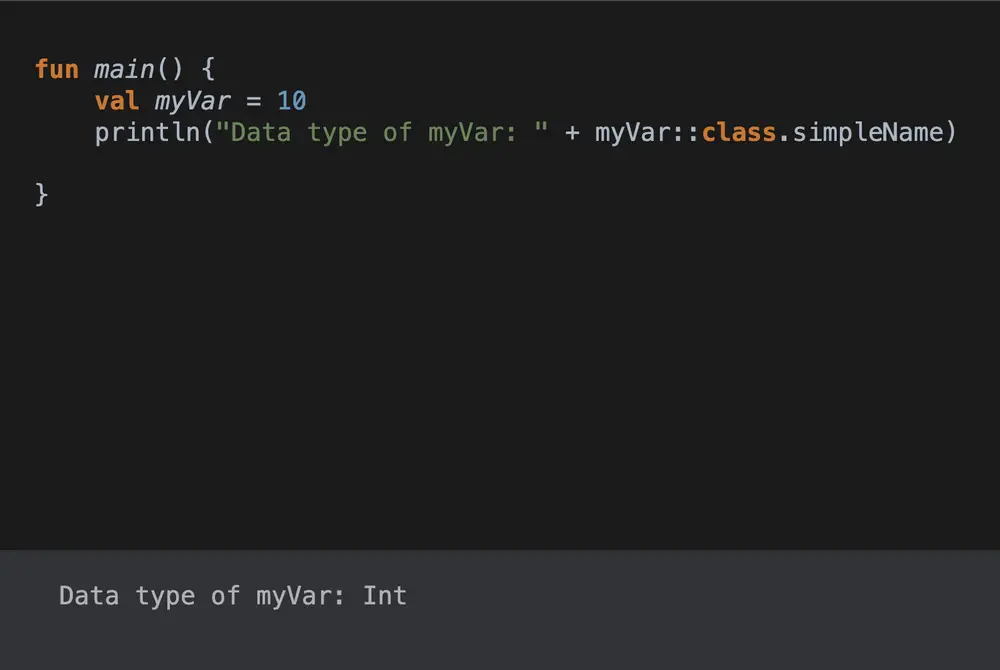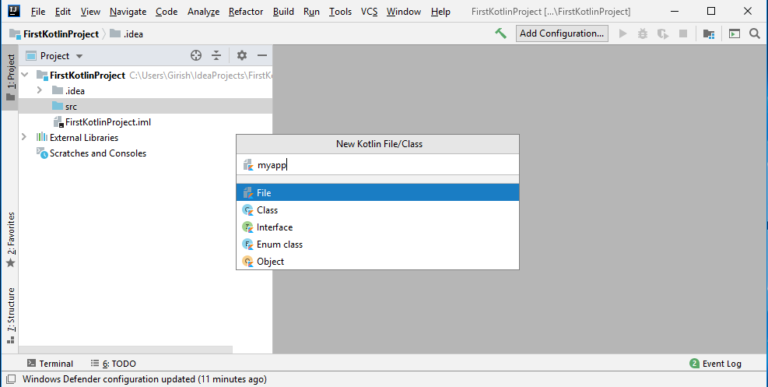

The full syntax for creating an anonymous listener in Kotlin would look like this: button.Kotlin has a concept called qualified returns, which means return statements inside lambdas ( like the one passed to forEach) need to be handled differently.
Here's an example of this, using their constructors: val intArray = IntArray(10) 1.0 funThey are also easier to create - an Array requires a non-null value for each of its indexes, while IntArray initializes them automatically to 0 values. Primitive arrays are more performant, as they don't require boxing for every element. These can be created with their own (also non-generic, like the class itself) intArrayOf factory method: val intArray: IntArray = intArrayOf(1, 2, 3, 4, 5) (There are similarly named classes for the other primitive types as well, such as ByteArray, CharArray, etc.) IntArray is a special class that lets you use a primitive array instead, i.e. In the following example, we take a string in str1, and iterate over each character in this string using erator() method and For Loop. This is what you get when you use the generic arrayOf method to create an array: val arrayOfInts: Array = arrayOf(1, 2, 3, 4, 5) To iterate over each character in the String in Kotlin, use erator() method which returns an iterator for characters in this string, and then use For Loop with this iterator. When using this with the Int type parameter, what you end up in the bytecode is an Integer instance, in Java parlance. Array vs IntArray What's the difference between Array and IntArray?Īrray uses the generic Array class, which can store a fixed number of elements for any T type. Qualified returns allow us to return from an outer function. In Kotlin, functions can be nested using function literals, local functions, and object expressions. A continue proceeds to the next iteration of that loop. The best way I found is to have a look at some of the most frequently asked questions about Kotlin on StackOverflow. A break qualified with a label jumps to the execution point right after the loop marked with that label. I am currently defending the third place on the top users list of the Kotlin tag on StackOverflow, and I wanted to make use of the bragging rights this gives me while I can.

This content was originally published as a series of articles on (with some runnable code snippets!).


 0 kommentar(er)
0 kommentar(er)
